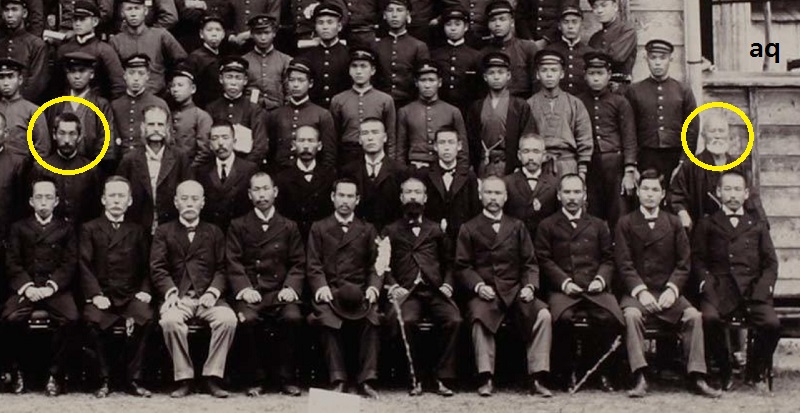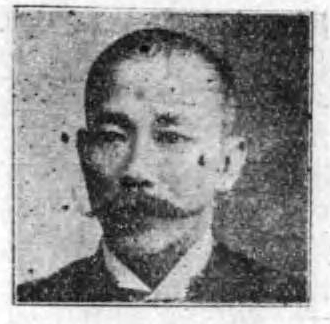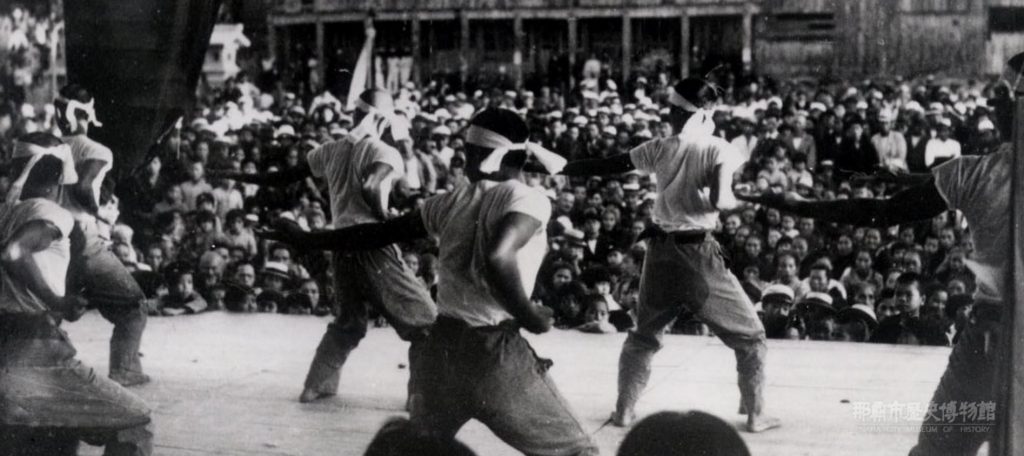On Monday, November 25, from 2-4 pm, the “2nd Okinawa Karate Academy” was held at the Auditorium on the 4th floor of the Okinawa Prefectural Office. The topic was new findings regarding “An unknown group of early modern Karate persons.”
Good friend Ulf Karlsson from Sweden and Morikazu Kyan from Okinawa attended, and Ulf shared the minutes of the lecture.
The speaker was Nakamura Akira of the Okinawa Prefectural Karate Promotion Division. Within this blog post, I have added a few infos from the cited sources, namely the part which mentions Passai, Naihanchi, and Kusanku, since this was was not mentioned in the minutes of the lecture.
Introduction
The achievements of experts such as Itosu Ankō (1831-1915), Hanashiro Chōmo (1869-1945), and Yabu Kentsū (1866-1937) are well known. However, there are karate persons from the initial stages of karate’s spread in educational settings who were forgotten and buried in history. In the current lecture, Nakamura Akira introduced three unknown karate persons and the “secret story of karate’s introduction” to school education.

1. Haraguni Seishō (1863-1930) — The First Karate Teacher in Educational Setting
Short curriculum vitae
- 1863: Born in Naha Izumisaki.
- 1887: Starts as a licensed elementary school teacher at Shuri elementary school.
- 1889: Served as a “commander” at the welcome athletic meet for Prime Minister Itō Hirobumi (1841-1909), who visited Okinawa at the time.
- 1896: Involved in a bloody event when members of the Stubborn Party (gankotō 頑固党) used “Karate” to commit violence.
- 1907: Received a monetary award from the Ministry of Education, Science, and Culture for his service in education during the Russo-Japanese War.
- 1909: Received an educational award from the Ministry of Education, Science, and Culture.
- 1930, December 20: Haraguni Seishō also appears in Yamashiro Seichū’s[1] drama “The Yamanomon (sic) Incident.”
- 1930, December 27: Dies in Kakinohana, Naha City.
- 1931: The memorial writing “The Story of Teacher Harukuni” by Shimabukuro Zenpatsu is serialized in the “Okinawa Daily Newspaper” (Okinawa Nichi-Nichi Shimbun).
On account of new research results, this Haraguni Seishō is considered the first confirmed karate teacher in early modern Okinawa. In educational settings, that is.
Haraguni Seishō was born in 1863 in Naha Izumisaki as the oldest son of Seiho 政輔, originally from Shuri Mawashi. His father Seiho had mastered karate, and under this influence Seishō also learned karate. There is an episode that he was captured by a Chikusaji (policeman) during his youth, but it is unclear whether this was due to a kake-dameshi 掛試し.
Following the Abolition of the Ryūkyū Kingdom and Establishment of Okinawa Prefecture (1874-79), Haraguni graduated from the Okinawa Normal School (Okinawa Shihan Gakkō) in Shuri in 1887, and afterwards taught as a licensed elementary school teacher. First he was appointed to teach at the Shuri elementary school. Due to the violent incident that took place there in 1896, Seishō was engraved in the memories of the people at that time.
When the First Sino-Japanese war (1894-1895) ended, the activities of the Stubborn Party (gankotō 頑固党), which had been active until then, subsided. This said, it didn’t vanish like mist, but rather continued to smolder violently like ash-covered charcoal. The incident took place on February 27, 1896. On that day, when the parading troupes of the Stubborn Party of Shuri passed the place in front of Shuri Primary school, a wall of scorn by the pupils triggered the reaction of the Stubborn Party. Haraguni Seishō stepped in between the two groups to try to intervene, but the whole thing developed into case of bloodshed and injuries.
Subsequently, written denunciations of the Stubborn Party appeared in different newspapers. It was called the “Rampancy of the Stubborn Faction,” and in the Ryūkyū Kyōiku labeled it “The Odd Accident of this party’s member, Haraguni Seishō”:
The terrible spectacle reached a state where Haraguni was injured by wild attacks and beating with clenched fists and a parasol and he got injured and blood was shed.
It continues:
This prefecture’s usage of fists is what the martial arts of fencing (gekken) and the spear (sōjutsu) are for the other prefectures. It is also called karate and its techniques have names like “Passai,” “Kūsankun,” “Naihanchin,” and the like. Certain educated Ryūkyūans formerly all trained this method, by means of which one can prepare for emergencies.
However good that may sound for us today, “karate” — when used by the other party — has been considered to be a savage thing, as can be seen in the direct continuation of the text:
That is, it does not differ at all from the case when a member of the department of school affairs was killed by Taiwan local bandits using spears, cudgels and swords. In our prefecture this mob’s mischievous fellows still today are active as evildoers, go rampant and roam at will. It is like the establishment of complete disorder and is really hazardous.
In addition it is also reported that there was no danger to his life because
“Mr. Haraguni also knew this technique well from a person in Naha, so he did not lose his life.”
In other words, both sides were using Karate. It can therefore be considered a fact that early modern karate was not just an martial art, but it was a tool used by both opposing political factions, as I mentioned earlier (see link below).
In 1899, Seishō was transferred as teacher and principal of the Haebaru elementary school in Shimajiri district, and in 1901 worked as the principal of Kyan elementary school, also in Shimajiri district. 1912 he became teacher and headmaster of the Takamine elementary school.
While the actual scope of his activity as a karate teacher remains unclear, there is the following unambiguous encyclopedic entry:
“From early on, he had a liking for karate and he continuously encouraged students [to practice it].”
“Haraguni Seishō,” in “Record of Okinawan Persons.”
Although there is no information about when and how exactly it took place, and besides being a karate man himself, there is no doubt that he encouraged karate instruction at school. Haragkuni Seishō should therefore be considered a pioneering figure of karate instruction in school education.

“Record of Okinawan Persons,” 1916.
Footnotes
[1] Yamashiro Seichū 山城正忠 (1884–1949): Studied medicine in Tokyo. During that time, he also studied under writers Tesano Yosano and Akiko. Afterwards he returned to Okinawa and opened a dental clinic. He published novels and plays in addition to tanka in his own fanzine and in newspapers. He died November 22, 1949, at the age of 66. He wrote the anthology “Shiden o yaku 紙銭を焼く (Burning paper money),” the novel “Kunenbo 九年母,” and the drama “Crown Ship 冠船 (kansen).” BTW, Kunenbo refers to an evergreen shrub of the citrus family with a mandarin-pomelo variety of fruit.

© 2019 – 2020, Andreas Quast. All rights reserved.